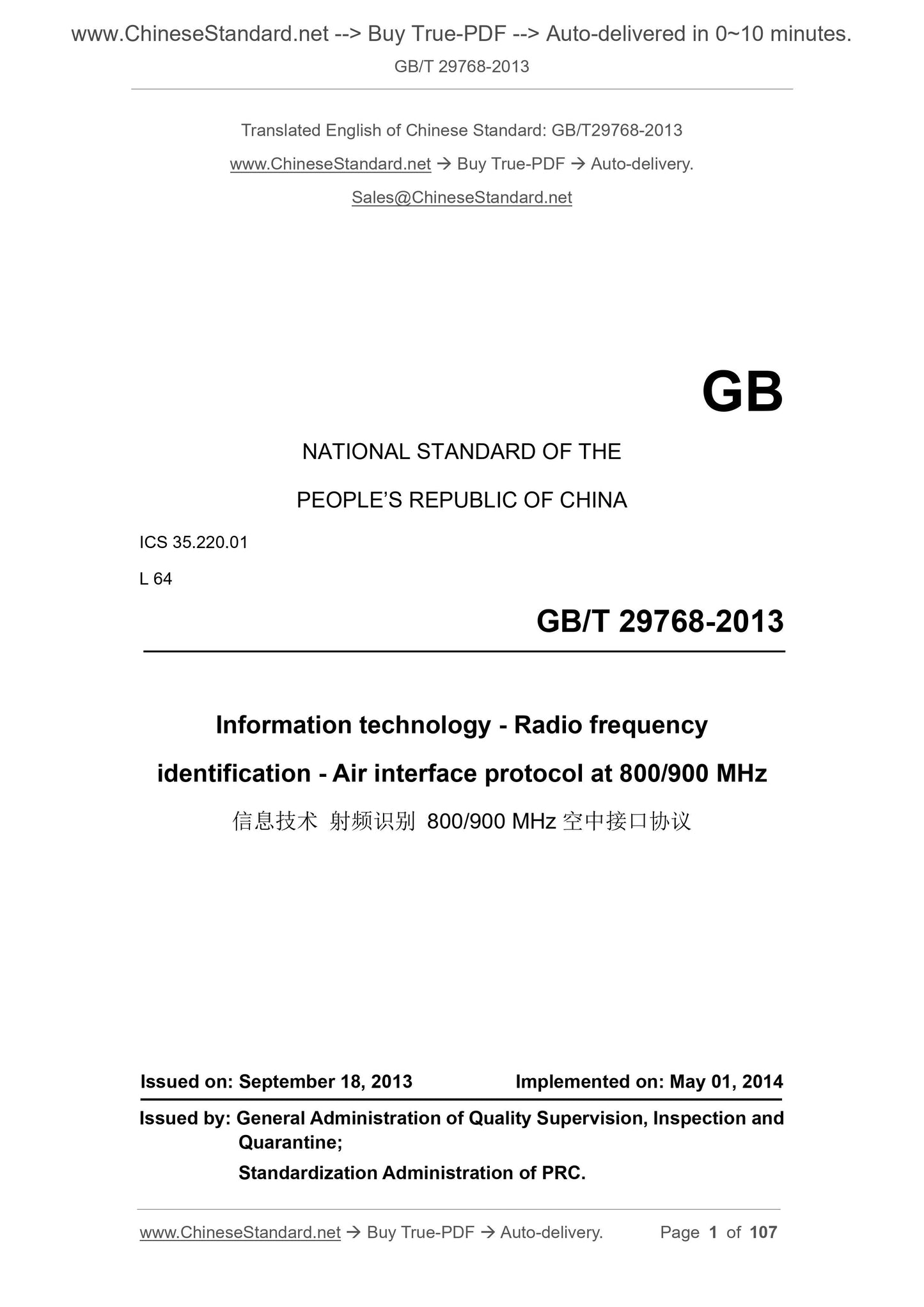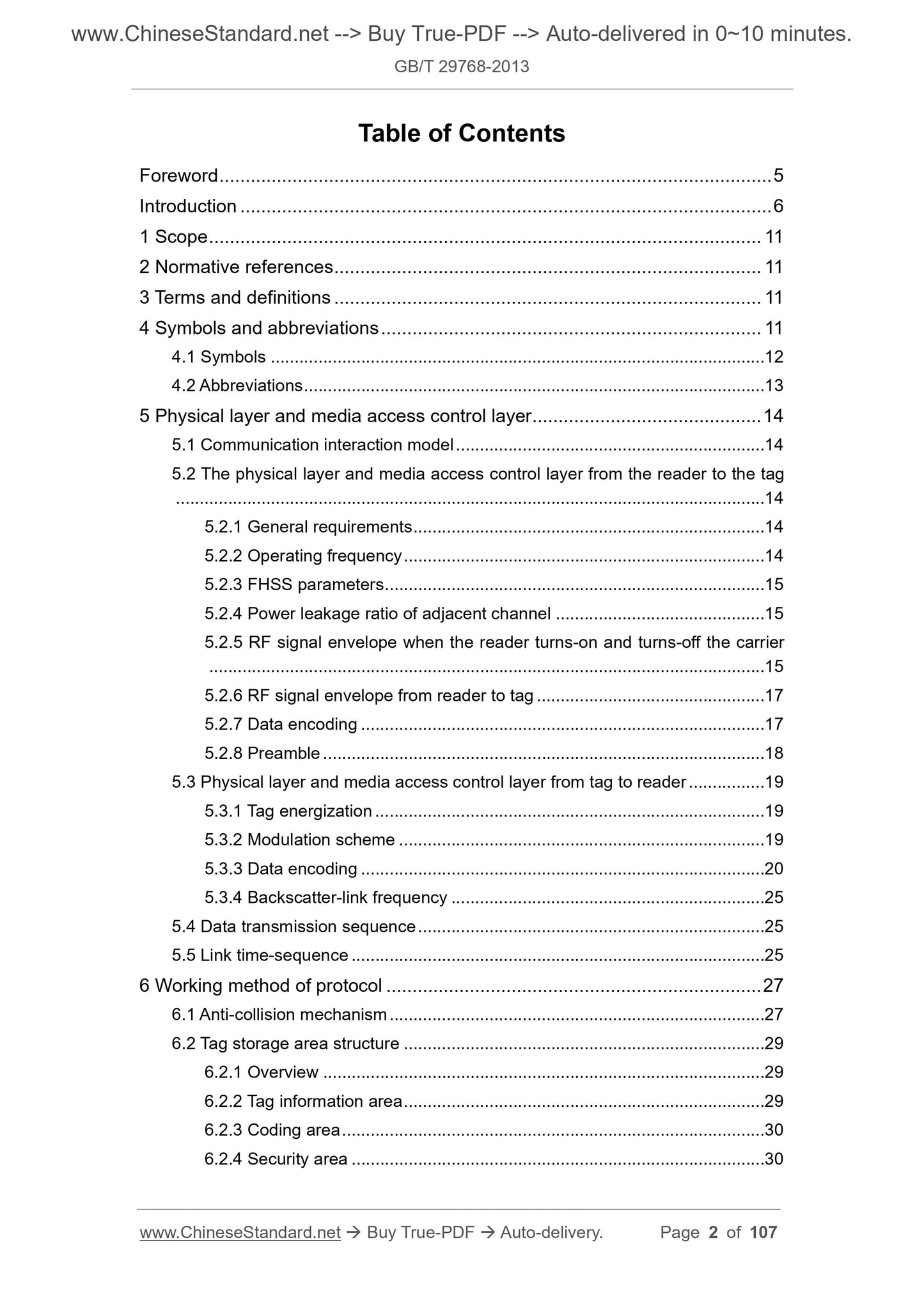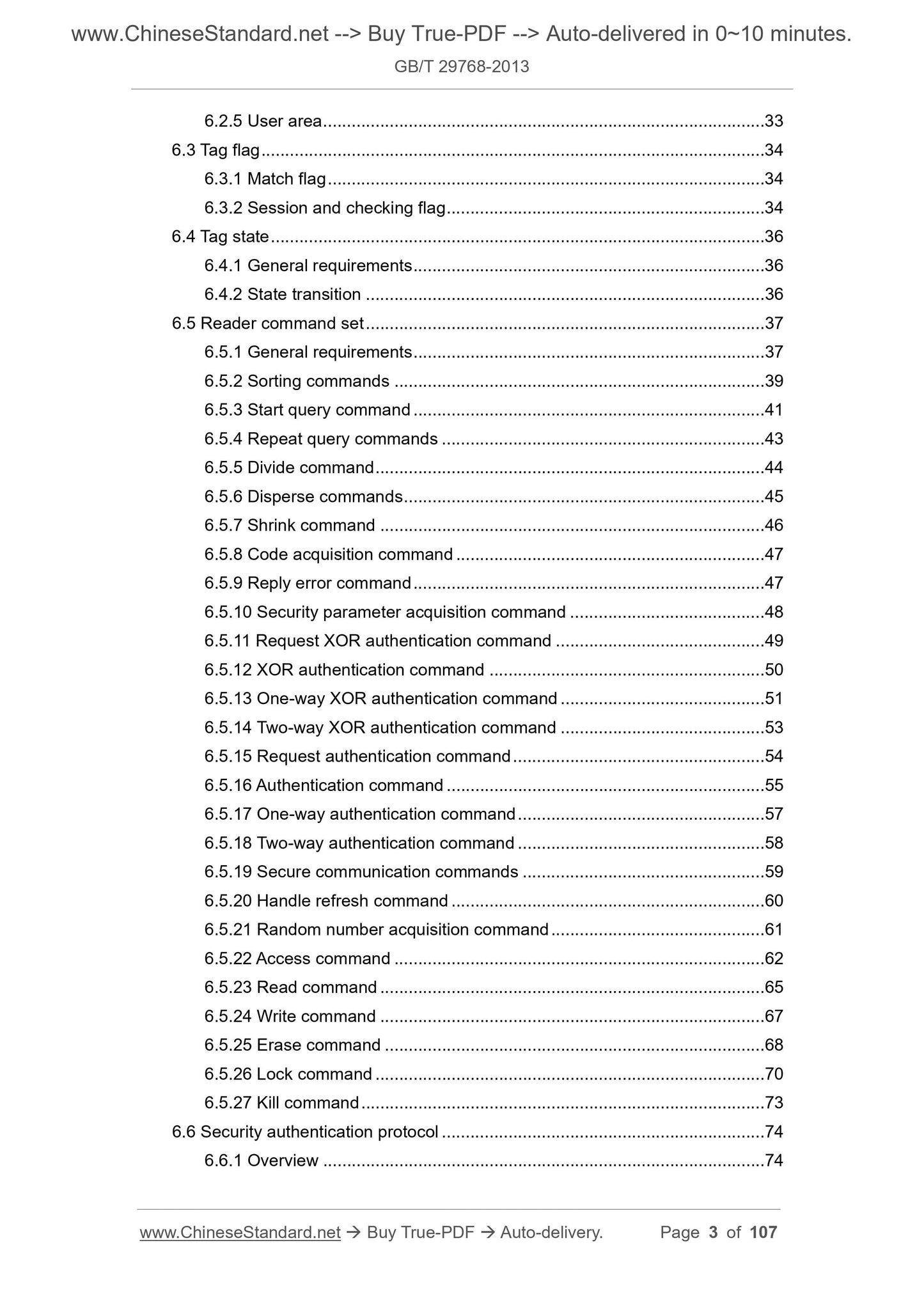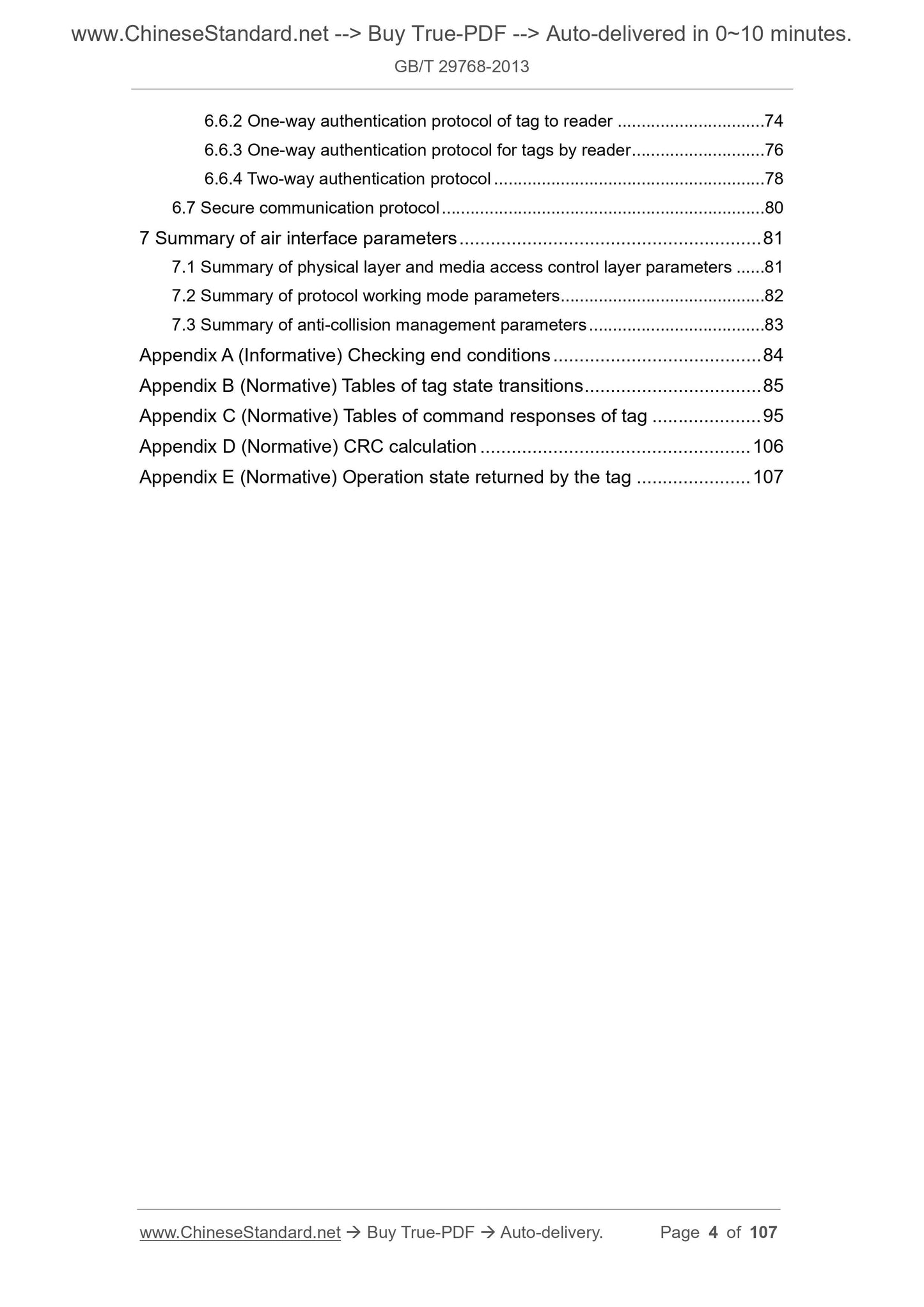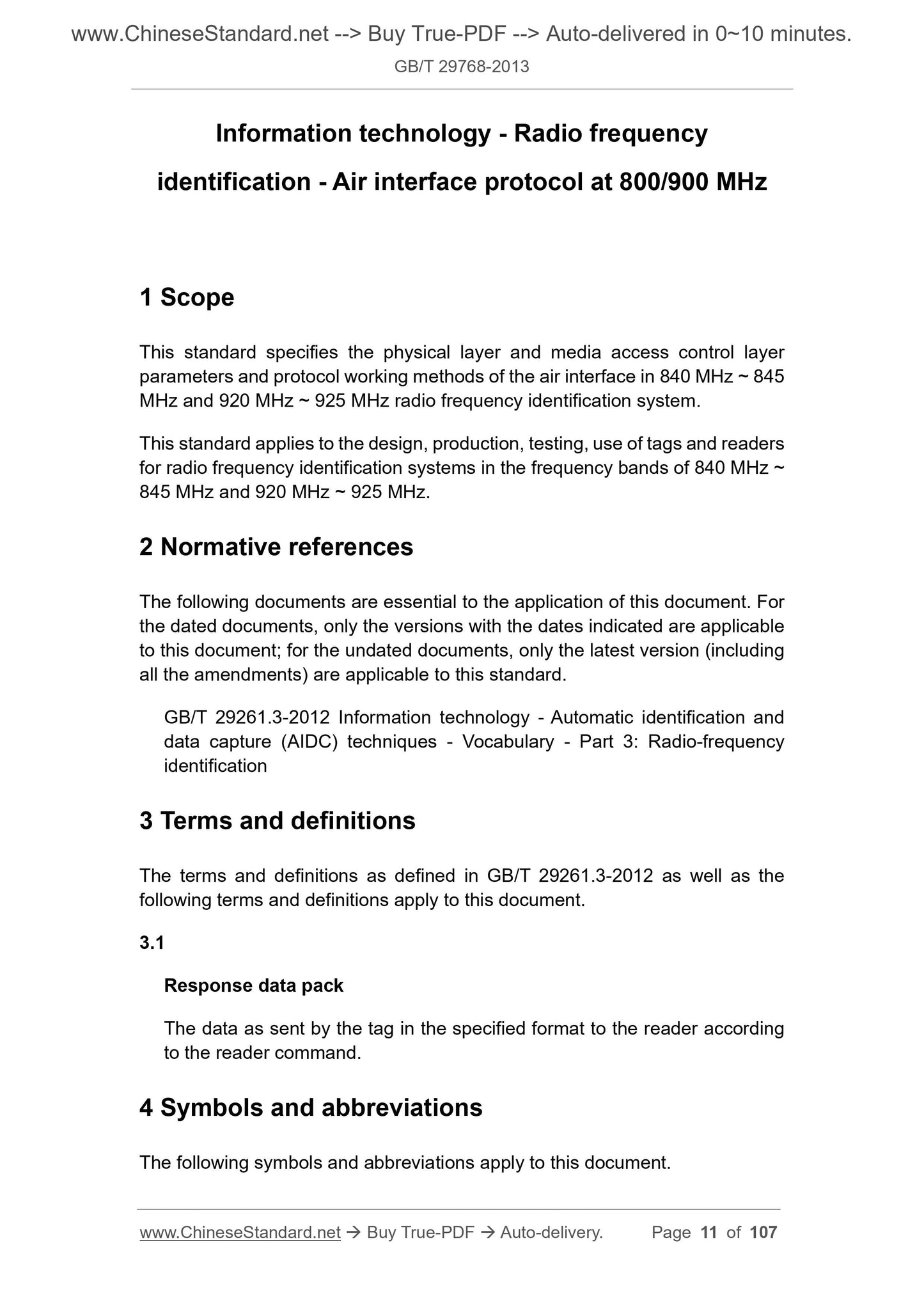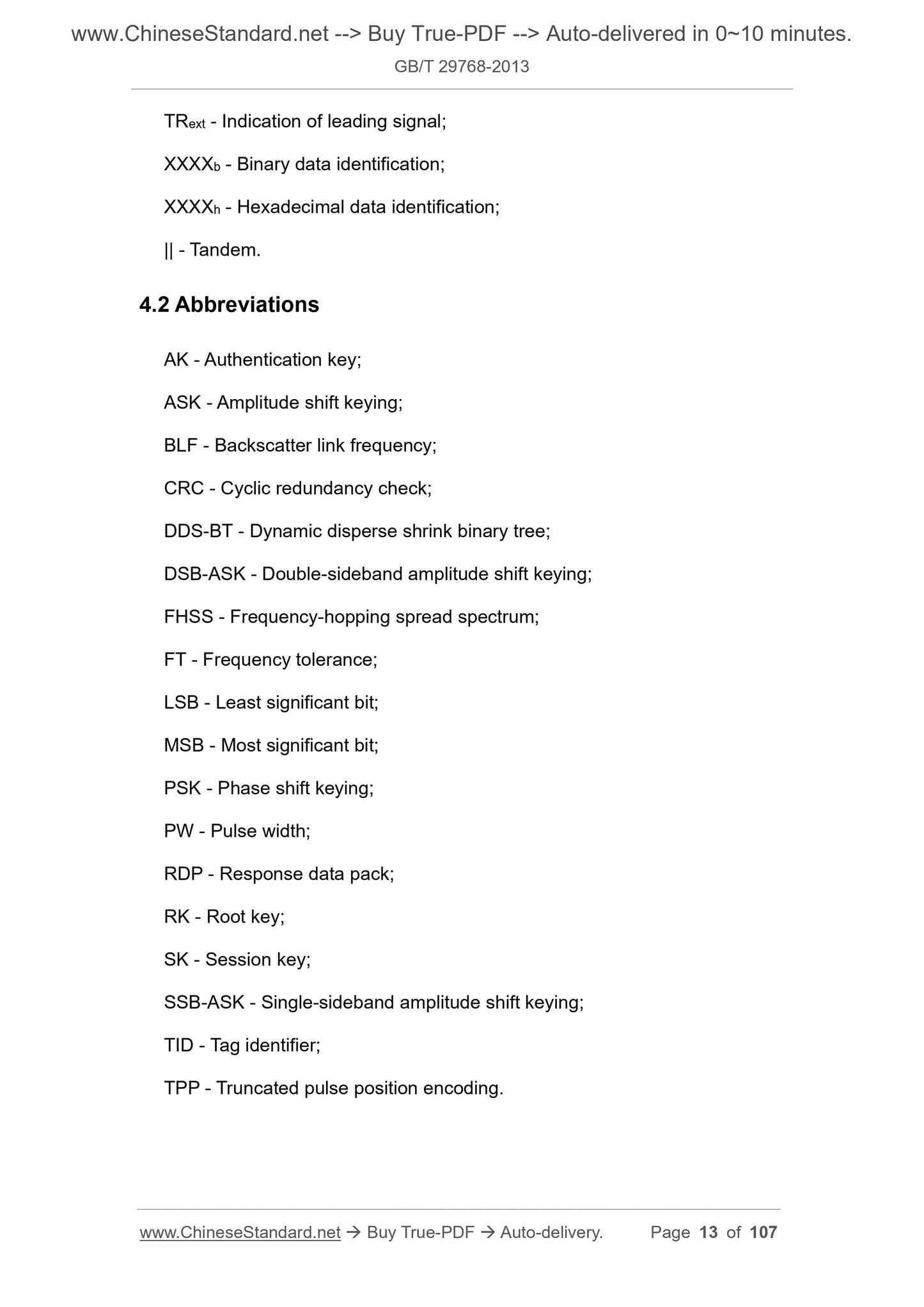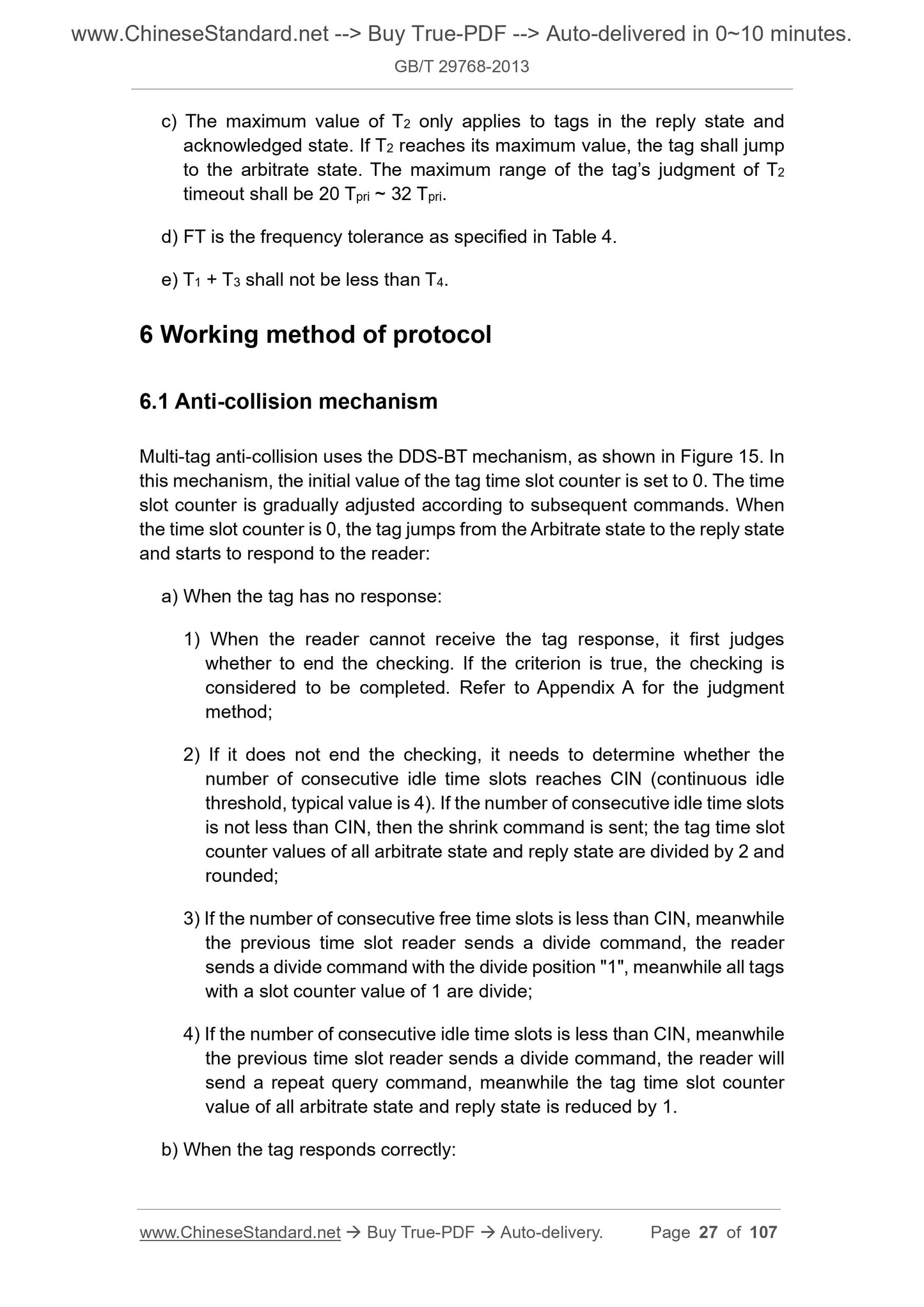1
/
of
12
www.ChineseStandard.us -- Field Test Asia Pte. Ltd.
GB/T 29768-2013 English PDF (GB/T29768-2013)
GB/T 29768-2013 English PDF (GB/T29768-2013)
Regular price
$555.00
Regular price
Sale price
$555.00
Unit price
/
per
Shipping calculated at checkout.
Couldn't load pickup availability
GB/T 29768-2013: Information technology - Radio frequency identification - Air interface protocol at 800/900 MHz
Delivery: 9 seconds. Download (and Email) true-PDF + Invoice.Get Quotation: Click GB/T 29768-2013 (Self-service in 1-minute)
Newer / historical versions: GB/T 29768-2013
Preview True-PDF
Scope
This standard specifies the physical layer and media access control layerparameters and protocol working methods of the air interface in 840 MHz ~ 845
MHz and 920 MHz ~ 925 MHz radio frequency identification system.
This standard applies to the design, production, testing, use of tags and readers
for radio frequency identification systems in the frequency bands of 840 MHz ~
845 MHz and 920 MHz ~ 925 MHz.
Basic Data
| Standard ID | GB/T 29768-2013 (GB/T29768-2013) |
| Description (Translated English) | Information technology - Radio frequency identification - Air interface protocol at 800/900 MHz |
| Sector / Industry | National Standard (Recommended) |
| Classification of Chinese Standard | L64 |
| Classification of International Standard | 35.220.01 |
| Word Count Estimation | 86,889 |
| Quoted Standard | GB/T 29261.3-2012 |
| Regulation (derived from) | National Standards Bulletin No. 18 of 2013 |
| Issuing agency(ies) | General Administration of Quality Supervision, Inspection and Quarantine of the People's Republic of China, Standardization Administration of the People's Republic of China |
| Summary | This standard specifies the T840 MHz ~ 845 MHz and 920 MHz ~ 925 MHz band radio frequency identification system physical layer and MAC layer parameters and operating mode of the air interface protocol. This standard applies to 840 MHz ~ 845 MHz and 920 MH |
Share
